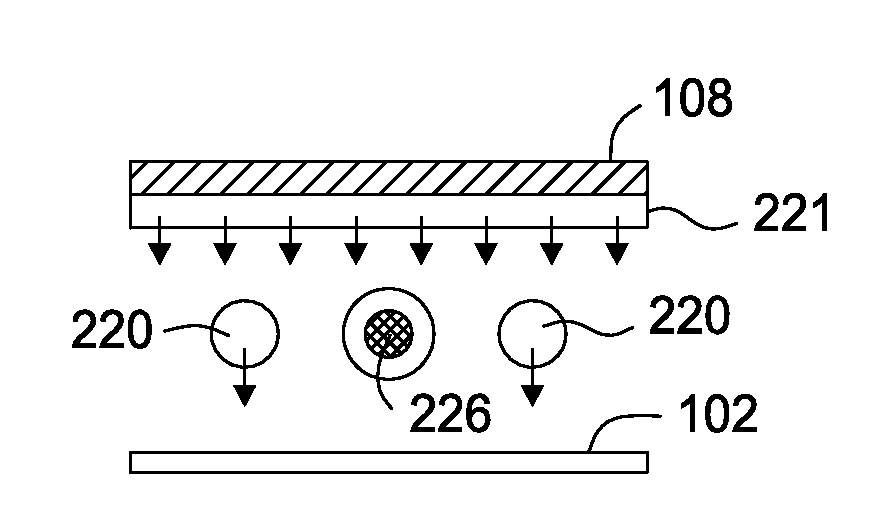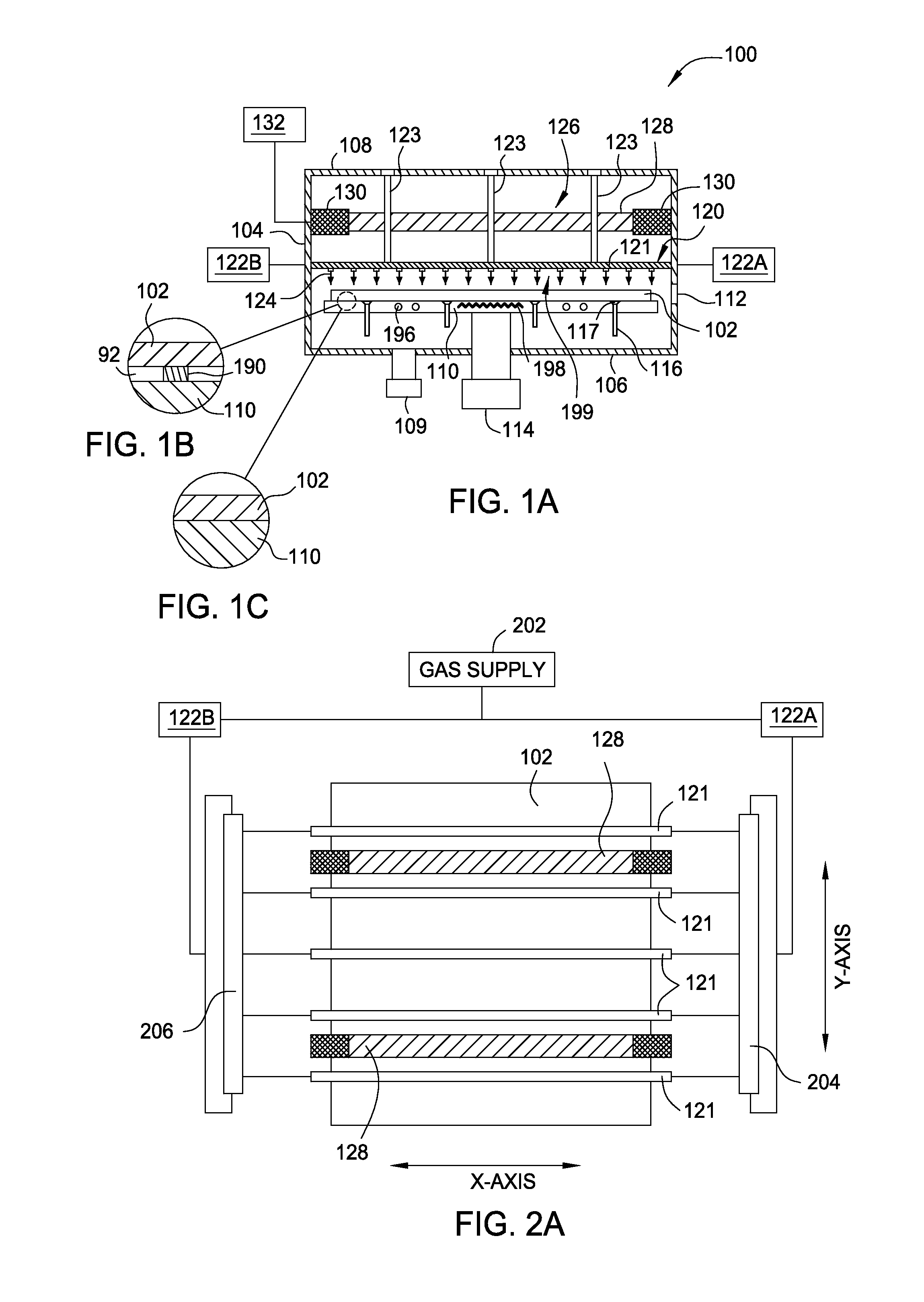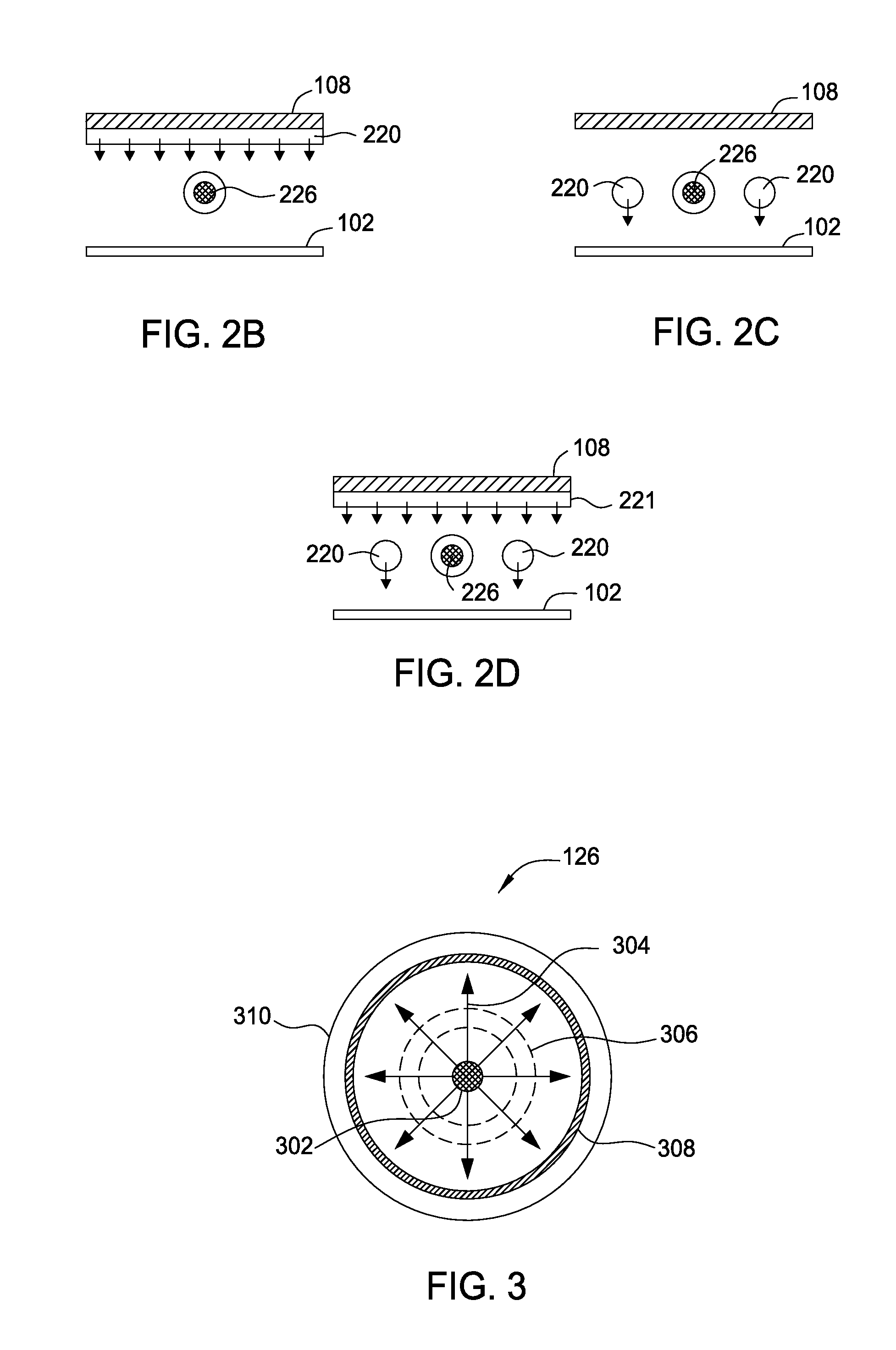Thin film deposition using microwave plasma
a thin film and microwave technology, applied in the direction of plasma technique, chemical vapor deposition coating, coating, etc., can solve the problems of large input power drop across the plasma sheath, dark space, difficulty in maintaining homogeneity during scale up
- Summary
- Abstract
- Description
- Claims
- Application Information
AI Technical Summary
Benefits of technology
Problems solved by technology
Method used
Image
Examples
Embodiment Construction
[0021]Embodiments of the present invention provide deposition processes for a silicon-containing dielectric layer (e.g., SiN) using an improved microwave-assisted CVD chamber. The improved microwave-assisted CVD chamber includes a gas feeding source and a coaxial microwave source that are positioned in a parallel relationship with a substrate susceptor upon which a substrate is placed. The gas feeding source may be located between the coaxial microwave source and the substrate susceptor. The gas feeding source may include an array of gas feeding lines which are arranged parallel and longitudinally spaced from each other. The coaxial microwave source may include a single or plural linear microwave generator which may be arranged in a parallel relationship to the longitudinal direction of the gas feeding lines. By using the inventive apparatus with microwave plasma source, good quality of CVD film can be obtained without the need of substrate susceptors using expensive heating element...
PUM
| Property | Measurement | Unit |
|---|---|---|
| temperature | aaaaa | aaaaa |
| chamber pressure | aaaaa | aaaaa |
| distance | aaaaa | aaaaa |
Abstract
Description
Claims
Application Information
 Login to View More
Login to View More - R&D
- Intellectual Property
- Life Sciences
- Materials
- Tech Scout
- Unparalleled Data Quality
- Higher Quality Content
- 60% Fewer Hallucinations
Browse by: Latest US Patents, China's latest patents, Technical Efficacy Thesaurus, Application Domain, Technology Topic, Popular Technical Reports.
© 2025 PatSnap. All rights reserved.Legal|Privacy policy|Modern Slavery Act Transparency Statement|Sitemap|About US| Contact US: help@patsnap.com



